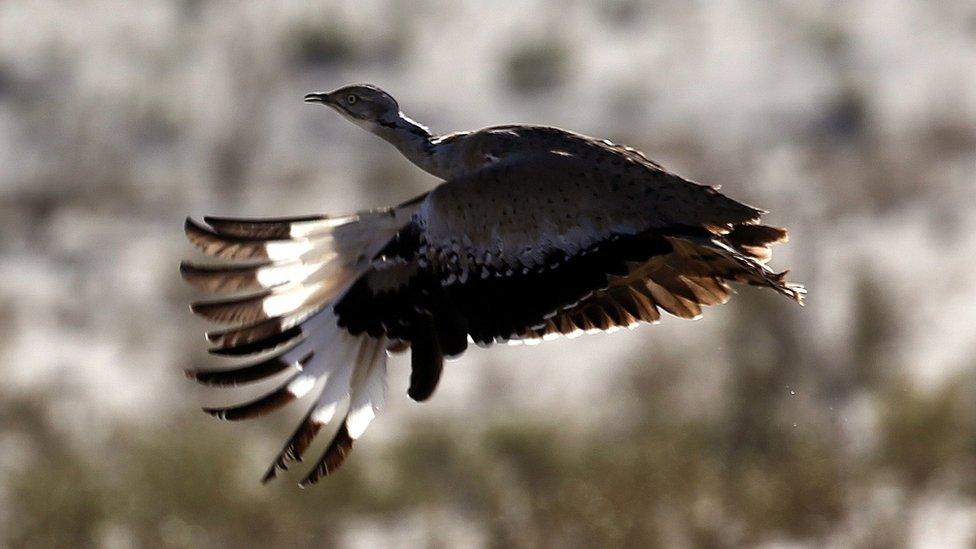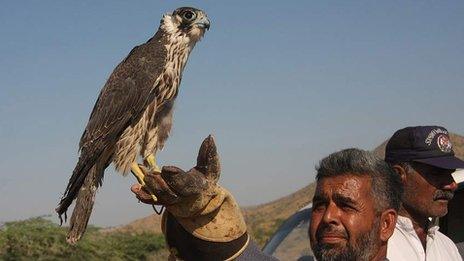Pakistan enforces hunting ban on Houbara bustard
- Published

The Houbara bustard is highly prized in the Arab Gulf states
Pakistan's Supreme Court has ordered a total ban on the hunting of the Houbara bustard, an endangered migratory bird prized by hunters from the Gulf states.
The court has asked the government to enforce international conventions on conservation which Pakistan has signed.
The Houbara bustard, about the size of a chicken, once flourished on the Arabian peninsula but has been hunted almost to extinction.
Many in the Middle East believe the bird's meat is an aphrodisiac.
The International Union of the Conservation of Nature (IUCN) estimates the global population of Houbara bustards at between 50,000 and 100,000 and includes it on its red list of threatened species, external.
The BBC's Ilyas Khan in Islamabad says that although hunting the birds has been banned in Pakistan, the government has routinely made exceptions for Middle Eastern dignitaries on grounds of diplomatic expediency and because they bring "investment in the social sector" like hospitals and schools.
In 2014, a Saudi royal hunting party killed more than 2,000 Houbara bustards in a 21-day safari in Chagai, Balochistan, Pakistan's Dawn newspaper reported, external.
'Vulnerable'
This week's ruling came in response to petitions challenging a 2014 Sindh government order allowing hunting under special permits.
The Supreme Court struck down the notification under which the special permits were issued, saying that "neither the federation nor a province can grant licence/permit for hunting Houbara bustard", Pakistan's official APP news agency reported.
The IUCN, which lists the bird as "vulnerable", says hunting parties from Gulf countries often "vastly exceed" the quota of Houbara bustard they are allowed to kill under the special permits.
The hunters also destroy large areas of vulnerable desert habitat due to off-road driving, it says.
The bird also faces threats from oil exploration, road building and mining, it adds.
Each year, several thousand Houbara bustards traverse a 2,000km (1,200 mile) migratory route from Central Asia to the southern deserts of Pakistan and Iran, and return with the onset of summer.
- Published23 November 2011
